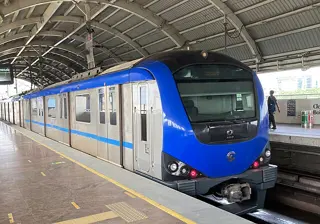Lucknow Metro Phase 2 Launches: Boosting Real Estate Along New Corridors

Breaking Ground on a Modern Transportation Network
The UP Metro Rail Corporation (UPMRC) has officially started building Lucknow Metro Phase 2, marking a significant moment for the city’s real estate scene. This ₹5,800 crore expansion introduces a crucial east-west corridor spanning 11.5km, linking Charbagh to Vasant Kunj with 12 new stations. The project aims for completion by 2030, blending 7 underground stations (including Charbagh, Aminabad, and Medical Chauraha) with 5 elevated stops (Thakurganj, Musa Bagh, and Basant Kunj).
Key Corridors and Their Real Estate Potential
### Charbagh to Vasant Kunj: A New Axis of Growth This route directly connects Charbagh—Lucknow’s bustling railway hub—to Vasant Kunj, a developing residential and commercial area. Key impacts include:
- Reduced commute times: Faster travel between northwest and central Lucknow, appealing to professionals and businesses
- Series of residential hotspots: Demand in areas like Pandeyganj and Gautam Buddha Marg are increasing rapidly.
- Nodal commercial zones: Medical Chauraha and City Railway Station could attract hospitals, offices, and retail developments
### Emerging Investment Hubs
| Station | Potential Development |
|---|---|
| Pandeyganj | Business parks, IT hubs |
| Medical Chauraha | Healthcare complexes |
| Basant Kunj | Luxury apartments, townships |
How Metro Expansions Reshape Local Markets
- Value Appreciation: Properties nearby Metro stations typically see 15-25% price increases post-launch
- Rental Demand Surge: Areas like Thakurganj and Balaganj may witness spiking demand for PG accommodations and co-working spaces
- Infrastructure Spillover: Private developers often launch mixed-use projects adjacent to transit nodes, driving absorption rates
Strategic Considerations for Investors
Short-Term Focus Areas:
- Land banking: Target plots near underground stations (higher commercial value)
- Residential demand: Look for projects in elevated station vicinities ensuring faster connectivity
- Retail development: Areas near City Railway Station and Musabagh could support hyper-local markets
Long-Term Projections: With planned extensions to SGPGI and Jankipuram, this corridor positions Lucknow as a key logistics hub between Delhi and eastern India, attracting new startup companies and industrial investments.
Challenges and Mitigation Strategies
While the Metro promises growth, developers should monitor:
- Construction phases: Align project completion timelines with Metro opening
- Zoning regulations: Ensure compliance with municipal development plans
- Traffic disruptions: Factor in temporary access limitations during tunnel boring
The UPMRC has already completed critical groundwork soil testing, utility mapping, and aerial surveys to minimize delays, signaling confidence in the project’s seamless execution. As this transit artery progresses, Lucknow stands poised to join India’s most dynamic metro markets, providing investors with strategic entry points across housing, commercial, and retail asset classes.